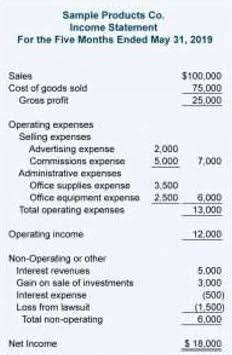
Similarly, the iPhone maker, whose fiscal year ends in September, had $70.4 billion in retained earnings as of September 2018. For just $1, you can unlock ST Grading’s top-rated stocks that consistently beat the market. Our AI-powered Smart Screener finds winning trades in seconds, helping you uncover hidden opportunities before others do. Stocks Telegraph provides information and tools designed to assist investors and Wall Street players. A major goal is to offer financiers comprehensive information that will help them gain insight into investing. If a company is truly growing and has a path toward sustainable revenue, then, by all means, it should be spending as much as it can on outpacing its competitors.
If retained earnings are in credit
When companies manage retained earnings properly, they build better financial health. Businesses can create lasting prosperity and win investors’s trust along with resilience. The more retained earnings a company has, the more profitable and stable it becomes financially. Retained earnings bridge the link between income statement and balance sheet.

Understanding and Addressing Negative Retained Earnings

This can be caused by various factors, such as overstaffing, high rent or lease payments, excessive advertising expenses, or poor management. While positive retained earnings are ideal, your retained earnings can still be harmful, depending on whether or not the company has generated more profits than it has paid out as dividends. Accounting Periods and Methods Negative retained earnings can be a concerning issue for any company, as they indicate that it has consistently reported net losses over time. Explore the causes, impacts, and strategies to manage negative retained earnings for better financial health and informed investment decisions. Whether positive or negative, retained earnings appear at the top of the liabilities side of the balance sheet, as part of the company’sshareholders’ equity. Retained earnings, on the other hand, specifically refer to the portion of a company’s profits that remain within the business instead of being distributed to shareholders as dividends.
- Traders who look for short-term gains may also prefer dividend payments that offer instant gains.
- They represent the portion of earnings that is not distributed to shareholders as dividends but is retained by the company for various purposes.
- These adjustments, though non-cash, can materially affect the retained earnings balance.
- They should assess the company’s financial statements in conjunction with management’s explanations, plans for recovery, and overall market conditions.
- Paying off high-interest debt also may be preferred by both management and shareholders, instead of dividend payments.
Impact on Financial Statements
- In every accounting period, a company combines net income with retained earnings of the previous period and deduct dividends paid from this total.
- They reflect the portion of net income that has been reinvested into the business.
- Having negative retained earnings is not necessarily a bad thing for a company in the short term.
- To find retained earnings you should deduct all dividends paid from the period’s net income.
- This thread is always available for any additional queries you have when managing transactions in your account.
- As an investor, one would like to know much more—such as the returns that the retained earnings have generated and if they were better than any alternative investments.
With careful planning and strategic decision-making, a company with negative retained earnings may be able to turn its financial situation around and build a stronger foundation for future growth. When a company has negative retained earnings, it means that the company’s losses are more significant than its accumulated profits. This can concern investors and creditors, as it may indicate that the company is in financial distress. Investors should evaluate management’s plans for addressing the deficit, such as cost-cutting measures, strategic investments, or restructuring efforts.
- During its current year, an unexpected decline in economic conditions results in a sharp drop in its sales, triggering a loss of $100,000.
- We’ll look at “Efficient Tech Solutions” as our success story and “Struggling Retail Co.” as an example of challenges with retained earnings.
- Earning more profits in reserve shows that the company can both survive and succeed over time making investors feel secure.
- Finally, changes in accounting policies, such as write-offs of assets or changes in revenue recognition, can also affect the retained earnings balance.
- For instance, the first option leads to the earnings money going out of the books and accounts of the business forever because dividend payments are irreversible.
- The recovery process might involve cost-cutting measures, product diversification, improving operational efficiencies, or undertaking restructuring efforts.
- Credit rating agencies review a company’s financial health, including the status of retained earnings, when assessing creditworthiness.
What Might Cause A Company’s Retained Earnings To Be Negative?

The company’s payout decisions control how much profit goes to shareholders. Companies that pay their shareholders big dividends https://www.bookstime.com/articles/minimum-wages save less profit for internal development. A regulated dividend policy balances rewarding investors and preserving strong finances.


If you have a $5,000 negative retained earnings entry, you subtract that from the total equity. Generally speaking, a company negative retained earnings with a negative retained earnings balance would signal weakness because it indicates that the company has experienced losses in one or more previous years. However, it is more difficult to interpret a company with high retained earnings.
